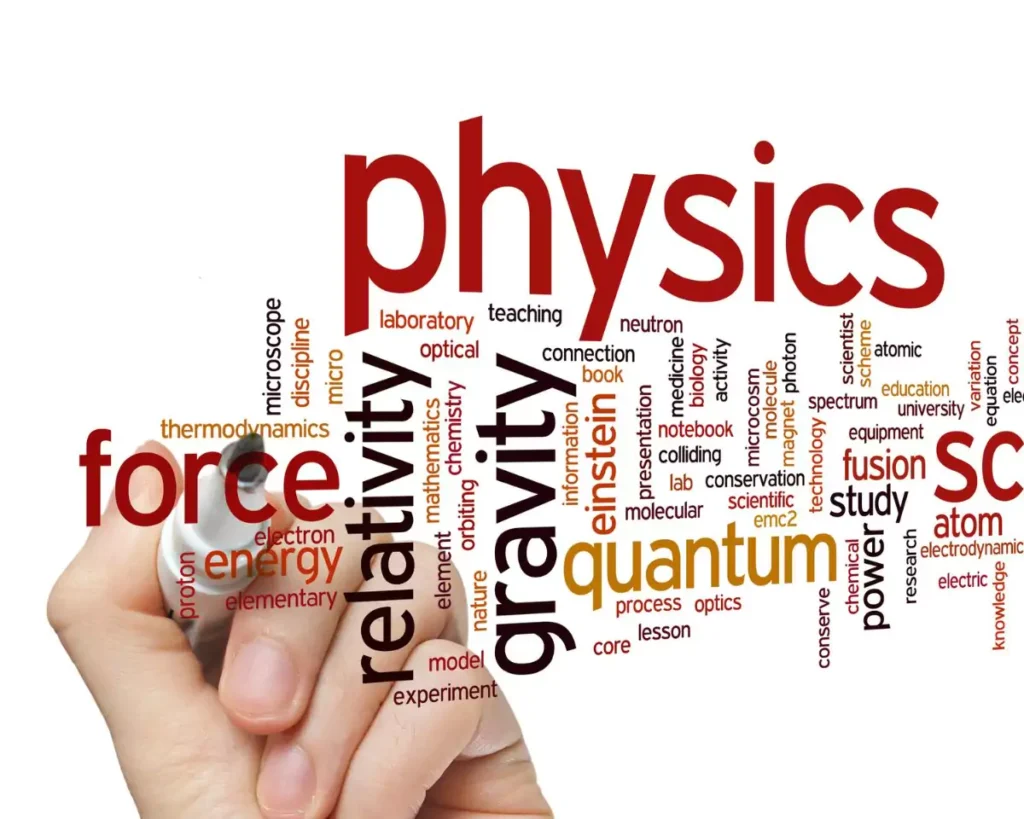
BITSAT Physics Syllabus 2022

Kritika Yadav

BITSAT Physics Syllabus 2022: BITS Pilani is the exam conducting authority of BITSAT 2022. On the official website, the exam’s organizers have posted the BITSAT Physics Syllabus. The Physics section is divided into several subtopics, each of which has 40 questions and is weighted differently in terms of marks. Being one of the hardest subjects, physics can be difficult to do well in.
Candidates can pay extra attention to the chapters of physics that carry a lot of weight in order to score higher on the exams. To learn more about the BITSAT Physics Syllabus, the chapters with the highest weights, the grading policy, and other details, candidates can read the article below.
BITSAT Physics Syllabus 2022
1. Units & Measurement
- Units (Different systems of units, SI units, fundamental and derived units)
- Dimensional Analysis
- Precision and significant figures
- Fundamental measurements in Physics (Vernier calipers, screw gauge, Physical balance etc)
2. Kinematics
- Properties of vectors
- Position, velocity and acceleration vectors
- Motion with constant acceleration
- Projectile motion
- Uniform circular motion
- Relative motion
3. Newton’s Laws of Motion
- Newton’s laws (free body diagram, resolution of forces)
- Motion on an inclined plane
- Motion of blocks with pulley systems
- Circular motion – centripetal force
- Inertial and non-inertial frames
4. Impulse and Momentum
- Definition of impulse and momentum
- Conservation of momentum
- Collisions
- Momentum of a system of particles
- Center of mass
5. Work and Energy
- Work done by a force
- Kinetic energy and work-energy theorem
- Power
- Conservative forces and potential energy
- Conservation of mechanical energy
6. Rotational Motion
- Description of rotation (angular displacement, angular velocity and angular acceleration)
- Rotational motion with constant angular acceleration
- Moment of inertia, Parallel and perpendicular axes theorems, rotational kinetic energy6.4 Torque and angular momentum
- Conservation of angular momentum
- Rolling motion
7. Gravitation
- Newton’s law of gravitation
- Gravitational potential energy, Escape velocity
- Motion of planets – Kepler’s laws, satellite motion
8. Mechanics of Solids and Fluids
- Elasticity
- Pressure, density and Archimedes’ principle
- Viscosity and Surface Tension
- Bernoulli’s theorem
9. Oscillations
- Kinematics of simple harmonic motion
- Spring mass system, simple and compound pendulum
- Forced & damped oscillations, resonance
10. Waves
- Progressive sinusoidal waves
- Standing waves in strings and pipes
- Superposition of waves, beats
- Doppler Effect
11. Heat and Thermodynamics
- Kinetic theory of gases
- Thermal equilibrium and temperature
- Specific heat, Heat Transfer – Conduction, convection and radiation, thermal conductivity, Newton’s law of cooling
- Work, heat and first law of thermodynamics
- 2nd law of thermodynamics, Carnot engine – Efficiency and Coefficient of performance
12. Electrostatics
- Coulomb’s law
- Electric field (discrete and continuous charge distributions)
- Electrostatic potential and Electrostatic potential energy
- Gauss’ law and its applications
- Electric dipole
- Capacitance and dielectrics (parallel plate capacitor, capacitors in series and parallel)
13.Current Electricity
- Ohm’s law, Joule heating
- D.C circuits – Resistors and cells in series and parallel, Kirchoff’s laws, potentiometer and Wheatstone bridge,
- Electrical Resistance (Resistivity, origin and temperature dependence of resistivity).
14. Magnetic Effect of Current
- Biot-Savart’s law and its applications
- Ampere’s law and its applications
- Lorentz force, force on current carrying conductors in a magnetic field
- Magnetic moment of a current loop, torque on a current loop, Galvanometer and its conversion to voltmeter and ammeter
15. Electromagnetic Induction
- Faraday’s law, Lenz’s law, eddy currents
- Self and mutual inductance
- Transformers and generators
- Alternating current (peak and rms value)
- AC circuits, LCR circuits
16. Optics
- Laws of reflection and refraction
- Lenses and mirrors
- Optical instruments – telescope and microscope
- Interference – Huygen’s principle, Young’s double slit experiment
- Interference in thin films
- Diffraction due to a single slit
- Electromagnetic waves and their characteristics (only qualitative ideas), Electromagnetic spectrum
- Polarization – states of polarization, Malus’ law, Brewster’s law
17. Modern Physics
- Dual nature of light and matter – Photoelectric effect. De Broglie wavelength
- Atomic models – Rutherford’s experiment, Bohr’s atomic model
- Hydrogen atom spectrum
- Radioactivity
- Nuclear reactions : Fission and fusion, binding energy
18. Electronic Devices
- Energy bands in solids (qualitative ideas only), conductors, insulators and semiconductors;
- Semiconductor d iode- I-V characteristics of a transistor; transistor as an amplifier (common emitter configuration) and oscillator.
- Logic rates (OR, AND, NOT, NAND and NOR). Transistor as a switch.
BITSAT Physics Syllabus 2022: Marking Scheme
- Total Number of Question- 40
- Total Marks- 120
- Marks for each correct answer- +3
- Marks for each wrong answer- -1
BITSAT Physics Syllabus 2022: Topic Wise Weightage
| Topic | Weightage |
| Heat & Thermodynamics | 10% |
| Magnetic Effect of Current & Magnetism | 9% |
| Wave Motion | 6% |
| Current Electricity | 6% |
| Electrostatics | 5% |
| Simple Harmonic Motion | 5% |
| Wave Optics | 5% |
| Fluids | 5% |
| Rotational Motion | 4% |
| Work, Power & Energy | 4% |
| Elasticity | 4% |
| Ray Optics | 4% |
| Units, Dimension, Errors | 3% |
| Gravitation | 3% |
| Alternating Current | 3% |
BITSAT Physics 2022: Best books for preparation
- HC Verma Vol 1 and Vol 2- Concepts of Physics
- Problems in General Physics by IE Irodov
- Arihant Physics by DC Pandey
- Advanced Level Physics by Nelson and Parker
- Fundamentals of Physics Resnick, Halliday, Walker
Related Links
Latest News
People Reading Now

CBSE Compartment Result 2023 OUT: Click For Direct Link



CSAB 2023: Special Round Registration Begins Today

